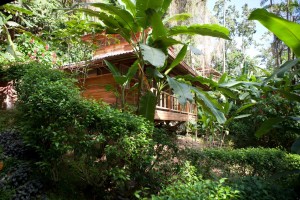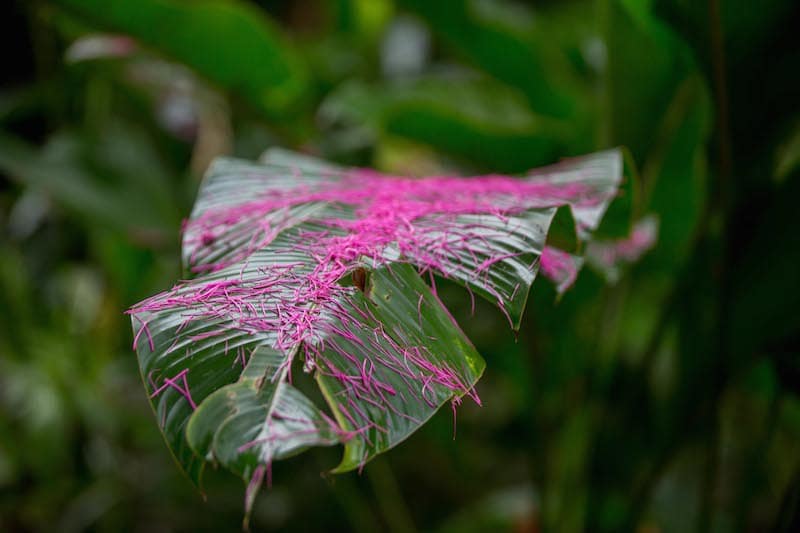The making of a Sustainable Nature Retreat
During the building of Samasati Retreat and Rainforest Sanctuary there was no use of heavy machinery or any major land movement. There was no clearing of land or cutting of trees. Structures were positioned so there would be minimal impact to the environment, therefore preserving the primary and secondary rainforest in its totality.
Two different types of woods have been used in the creation of Samasati: the first type, called “Green Wood”, was obtained with the permit of the Ministry of Environment and Energy (MINAE) from trees that have fallen naturally over the years around the property and that were cut to size “in situ” and pulled to the building sites with Oxen. There was no impacting the forest with power vehicles or roads. The second type of wood used came from young harvested wood brought from the plantations in the central valley of Costa Rica.
The style of construction follows the Afro Caribbean Sustainable Architecture, which is building for maximization of ventilation, isolation from heat, protection from humid climate, enhancement of the natural elements of the rainforest such as view, sounds, and breeze.
The shape of the roofs and materials provide protection in each building, all of which minimize the need for cooling.
A special custom-made sewage treatment system was designed by a sanitation engineer along with a strict control of the treatment of residual water. A large reservoir tank was built to collect rain water from the roofs for re-use for bathrooms and showers.
Since 1996, 80% of the entire property has been legally declared as Private Biological Reserve. Absolutely no exotic species of fauna or flora have been introduced into the rainforest to avoid alterations to the ecosystem.
There are over 200 species of birds on the Samasati grounds according to the Natural Conservancy from Washington DC which did a study.
“Samasati Biological Reserve takes in over 250 acres of primary and secondary rainforest which plays a very important role for the existing ecosystems since it protects one of the largest remaining forests in this area.





